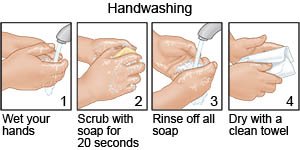Vulvovaginitis in Children
Medically reviewed by Drugs.com. Last updated on Aug 4, 2025.
What is vulvovaginitis?
Vulvovaginitis is an infection of the vulva (outer genitals) and vagina. The most common causes are bacteria, a virus, fungus, or pinworms. Vulvovaginitis is more common in girls who have not reached puberty. Before puberty, girls do not have pubic hair to prevent germs from entering the vagina. Abnormal vaginal development can also cause vulvovaginitis.
What are the signs and symptoms of vulvovaginitis?
- Pain, itching, redness, burning, or swelling in your child's vagina
- An odor from your child's vagina that may be foul or smell like fish
- Thick, curd-like discharge
- Thin, gray-white discharge
- Small skin tears or chafing
- Pain when your child urinates
How is vulvovaginitis treated?
Your child may be given medicines to treat an infection caused by bacteria or a fungus. Medicines may be given as a pill, or as a cream, gel, or tablet you insert into her vagina.
How can I help my child manage her symptoms?
- Have your child use a sitz bath. Fill a bathtub with 4 to 6 inches of warm water. You may also use a sitz bath pan that fits inside a toilet bowl. Have your child sit in the sitz bath for 15 minutes. Do this 3 times a day, and after each bowel movement. The warm water can help decrease pain and swelling.
- Use over-the-counter creams or ointments as directed. Examples include petroleum jelly, zinc creams, or hydrocortisone creams. These will help decrease itching and inflammation.
- Help your child remember to not wear tight-fitting clothes or undergarments. These can make her symptoms worse.
- Do not let your child use irritating products in her vagina. Examples include bubble baths and perfumed soaps. The vagina is delicate and easily irritated.
How can I help my child prevent infections?
- Remind your child to wash her hands with soap and water after she uses the toilet.

- Remind your child to wipe from front to back after she urinates or has a bowel movement. This will prevent germs from getting into her vagina.
- Help your child wash her vagina each day. Use mild, unscented soap. Let the area air dry.
When should I call my child's doctor?
- Your child has unusual vaginal bleeding.
- Your child has severe abdominal pain.
- Your child has a fever.
- Your child's vagina begins to bleed and it is not her monthly period.
- Your child's symptoms get worse.
- You have questions or concerns about your child's condition or care.
Care Agreement
You have the right to help plan your child's care. Learn about your child's health condition and how it may be treated. Discuss treatment options with your child's healthcare providers to decide what care you want for your child. The above information is an educational aid only. It is not intended as medical advice for individual conditions or treatments. Talk to your doctor, nurse or pharmacist before following any medical regimen to see if it is safe and effective for you.© Copyright Merative 2025 Information is for End User's use only and may not be sold, redistributed or otherwise used for commercial purposes.
Learn more about Vulvovaginitis
Treatment options
Care guides
Further information
Always consult your healthcare provider to ensure the information displayed on this page applies to your personal circumstances.
